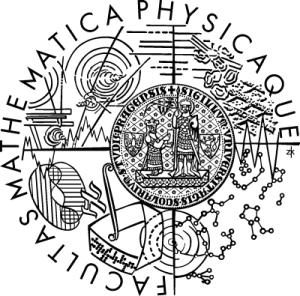 |
Dallas Albritton
University of Wisconsin-Madison
Department of Mathematics
480 Lincoln Drive
Madison, WI 53706
USA
|
|
| Self-similarity, singularity formation, and non-uniqueness in the partial differential equations of fluid dynamics |
|
Self-similarity is a key ingredient in recent work on singularity formation in the Euler equations (Elgindi; Hou and Chen) and non-uniqueness in the Euler equations (Bressan, Murray, and Shen; Vishik) and Navier-Stokes equations (Jia, Sverak, and Guillod; A., Brue, and Colombo), with contributions by many more. The goal of this course is to familiarize the audience with the kind of self-similarity analysis which appears in the above works and will continue to play an important role in the development of the field.
|
 |
Sebastian Schwarzacher
Charles University
Faculty of Mathematics and Physics
Sokolovska 83
18675 Prague 8
Czech Republic
|
|
University of Uppsala
Department of Mathematics
Ångströmlaboratoriet, Lägerhyddsvägen 1
75106 Uppsala
Sweden
|
|
|
| Challenges on the mathematical description of fluid-solid interactions |
|
In the lectures systems of coupled PDEs describing the motion of a solid object in contact with a viscous incompressible fluid are discussed. Mathematically this means the coupling between PDEs with very different behavior. Further the coupling becomes inherently non-linear in case of large deformations, where the solid motion changes the domain of definition of the fluid in time. Three different subjects will be discussed 1) The contact and bouncing between solid objects inside fluids, 2) the appearance of time-periodic motions when fluids and solids are interacting, 3) the existence of weak solution of a bulk elastic solid moving inside a viscous fluid. In each subject simplified examples are studied to allow to reveal the respective key methodological insights to treat them mathematically.
|
 |
Javier Gomez Serrano
Brown University
Department of Mathematics
151 Thayer Street
Providence, RI 02912
USA
|
|
| Computers and mathematics in partial differential equations: past, present and future |
|
In the last years a new paradigm ("modern mathematics") has emerged. Here, the influence of computers has been crucial. In particular, computers have helped provide rigorous (computer-assisted) proofs in the context of partial differential equations, and machine learning has become a very useful tool. I will also describe new exciting future directions in the field.
|
 |
Ewelina Zatorska
University of Warwick
Mathematics Institute
Zeeman Building
Coventry CV4 7AL
UK
|
|
| Analysis of hydrodynamic models of collective behaviour |
|
Macroscopic models of collective behaviour—typically formulated as systems of conservation laws—describe the evolution of averaged density and velocity of interacting agents. While analogous to classical hydrodynamic equations derived from gas particle interactions, these models account for more complex inter-agent dynamics beyond simple collisions.
This lecture series will begin with a derivation of hydrodynamic models of collective behaviour from microscopic particle systems, highlighting the differences between these models and the classical Euler and Navier-Stokes equations of fluid dynamics. In the second and third lectures, we will focus on analytical techniques used to study the existence, uniqueness, and long-time behaviour of solutions in one spatial dimension. The final lecture will address the more challenging case of multi-dimensional systems, where weaker solution concepts—such as distributional or measure-valued solutions—are required.
|












